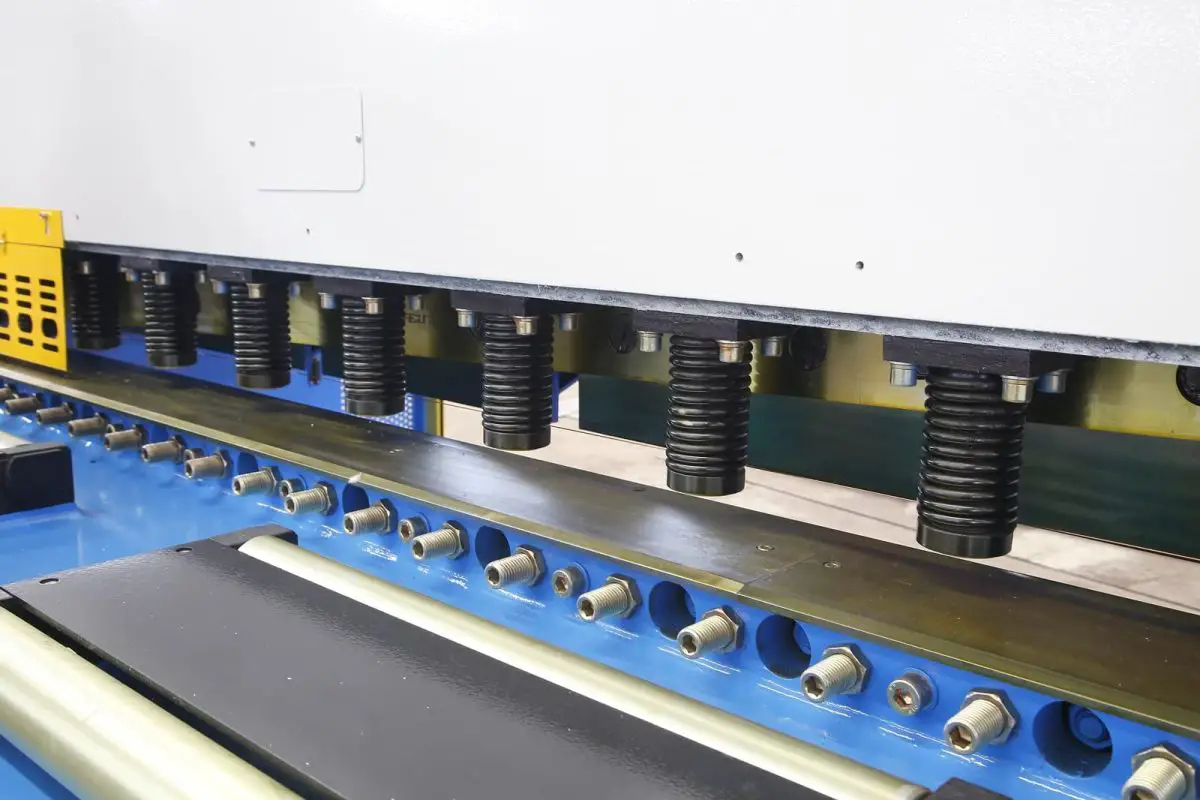
1. Remove the worktable front plate, front support arm and protective cover
As shown in the picture:
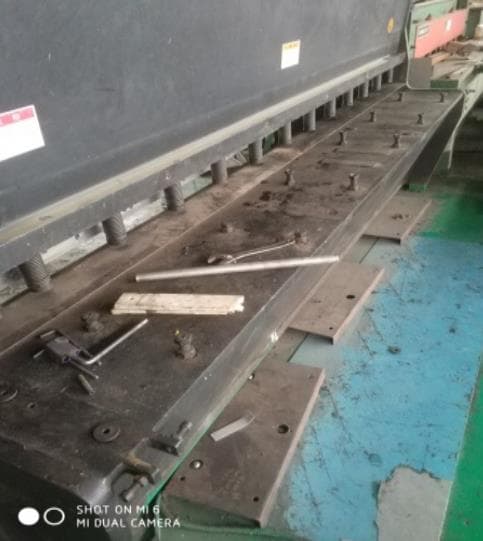
2. Blade removal
① When disassembling, remove the blade first. Leave a screw in the middle of the blade loose but not removed to prevent the blade from falling out and causing injury. After removing all screws, two people should cooperate to lift the lower blade (you can screw two screws into the blade to make lifting easier for both people).
② On the control panel, switch to “Manual Axis Mode” (the third option, which can only be performed in stop mode) as shown in the image:
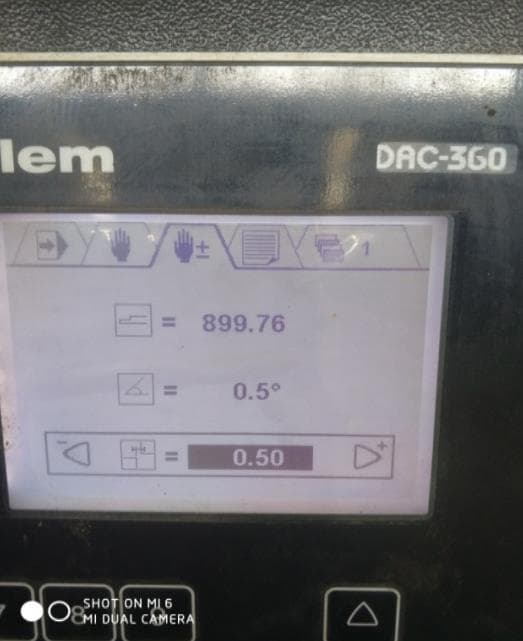
- Back stop assembly greater than 900
- Change the cutting angle of the upper blade to 0.5° (the greater the angle, the greater the inclination of the upper blade)
- Adjust the gap between the upper and lower blades to be greater than 0.5 (to prevent the blades from hitting each other when installed)
3. Dismantling the upper blade
When disassembling, loosen the intermediate screw without removing it. Then loosen (counterclockwise) the pressure limiting valve inside the device as shown in the image:

When loosening the pressure relief valve, follow the “better slow than fast” principle. The greater the counterclockwise rotation, the faster the upper blade will descend.
When the top blade has lowered enough to reveal the two hidden screws, close the pressure relief valve (tighten fully clockwise).
You can now remove the hidden screws on both sides of the top blade. After removing these two screws, activate the device's oil pump, and the upper blade will return to neutral, making it possible to remove the upper blade (you can adjust the inclination angle of the upper blade to be greater to facilitate disassembly).
During disassembly, several people must cooperate, using wooden planks in between to support the blade and avoid injuries.
4. Clean off oil and dust
Clean oil and dust from the upper and lower blades, inspect the tool for damage, and mark usable surfaces in preparation for installation.
5. Blade Installation
The installation steps are the reverse of the disassembly steps.
First, install the top blade by lightly securing it with two screws, making it easy for two people to lift and install.
Tighten the screws to the device, then install the lower blade (tighten it by hand until it can no longer be turned; the hidden screws on both sides of the upper blade do not need to be installed yet).
Finally, on the control panel, switch to the third option, “Manual Axis Mode”, and set the values: backstop at 900 or higher, cutting angle at 1.7° (greater than 1.5°) and backlash at 0.5 (to prevent the upper and lower blades from hitting each other during installation).
6. Fixing the upper and lower blades
During the fixing process, a person must always control the pressure limiting valve, ensuring that the upper blade descends slowly. When the upper blade is about to overlap the lower blade, close the pressure relief valve.
Use a feeler gauge to check the clearance between the upper and lower blades; Under normal circumstances, a 0.5mm feeler gauge should pass through (since the set gap is 0.5mm).
If the clearance is too small (e.g. 0.1 or 0.2), it must be adjusted again in “Manual Axis Mode”.
If the clearance is acceptable, it indicates that there will be no knocking between the blades and you can continue to loosen the pressure relief valve. Close the valve (clockwise) again when the rightmost part of the upper blade is about to touch the lower blade.
Again, use the feeler gauge to measure the gap to prevent the blades from knocking due to insufficient gap.
Turn on the oil pump to raise the upper blade slider to the neutral position. Use a wooden plank to support the middle of the top and bottom blades. Slowly loosen the pressure relief valve, allowing the blades to fully press against each other.
Tighten the screws nearby and use the same method to gradually tighten the screws on the top and bottom blades, moving from left to right in segments.
After tightening all the screws, lower the top blade and tighten the last two hidden screws (which are shorter).
7. Slack adjustment
Use a feeler gauge to calibrate the gap on both sides of the upper and lower blades, making sure it matches the display on the machine. Otherwise, adjustments will be necessary. Follow these steps:
① Two people need to use adjustable wrenches: one person holds the hexagonal rod in place while the other person loosens the nuts at both ends of the hexagonal rod, as shown in the figure:
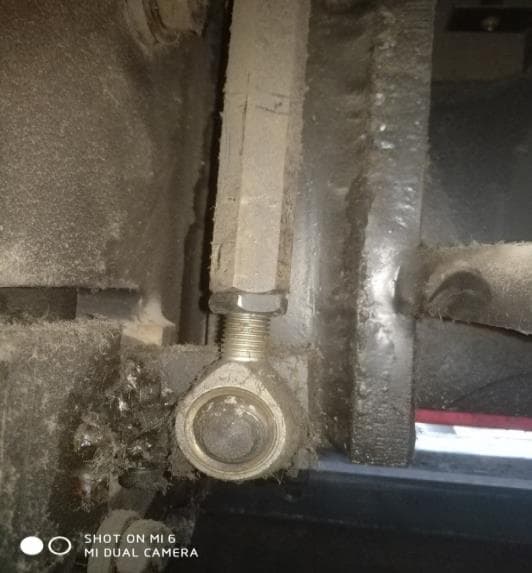
Send the nuts from both ends upward, and then use a wrench to turn the hexagonal rod (adjusting rod). Rotating the rod clockwise will lower the screw and decrease the clearance, while counterclockwise rotation will raise the screw and increase the clearance (adjust according to the situation on site).
② Use this method to adjust the gap on both sides. The clearance must be adjusted to match the machine display and must be consistent on both sides of the upper and lower blades before tightening the nuts on both ends of the screw.
8. Check the size of the backstop
After adjusting the gap, check that the back stop size is correct. If there are any errors, adjustments will be necessary. Follow these steps:
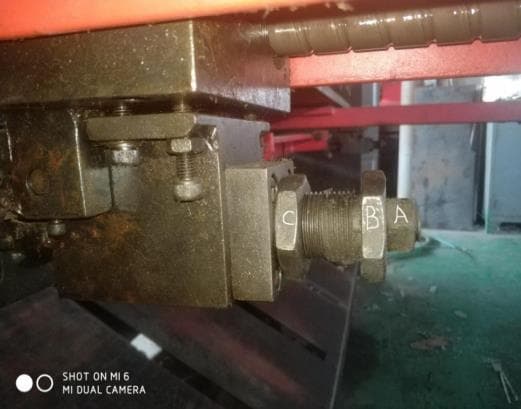
① Move the rear stop to the rear (the machine display should show 900 mm). Loosen nut “A” and then nut “C”. Use a wrench to turn the adjustment screw at point “B”. One full rotation of the screw equals approximately 2.3 mm (clockwise for reduction, counterclockwise for expansion).
② After the rear stop is adjusted, first tighten nut “A” and then nut “C”. Check the accuracy of the fit by cutting the test pieces and continue making adjustments until the test pieces are satisfactory.

























































